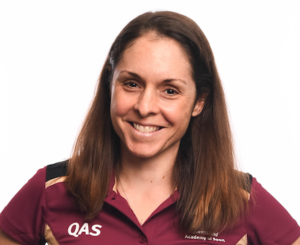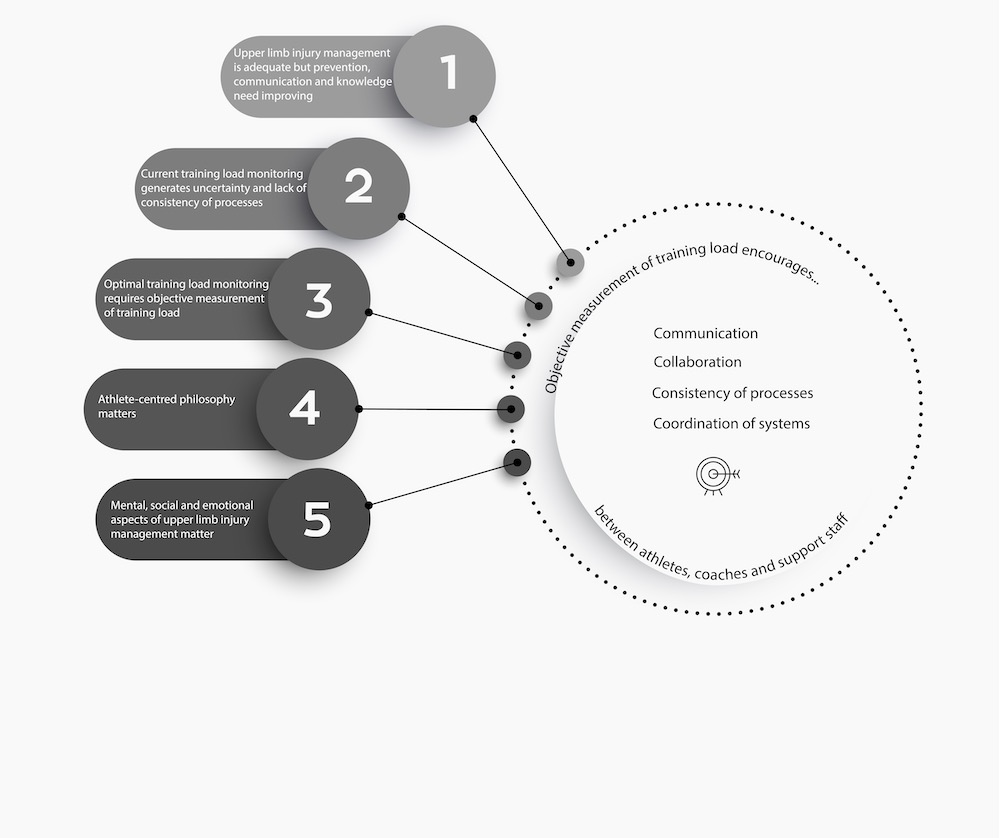The full article can be accessed here.
Tell us more about yourself and the author team
My name is Marguerite King and I am an Australian sports and exercise physiotherapist. I currently work at the Queensland Academy of Sport (QAS) and am the national women’s team physiotherapist for Water Polo Australia. I am currently undertaking a PhD through the University of Queensland investigating women’s water polo upper limb injuries and return to play. My co-authors are Dr Nathalia Costa, a post-doctoral physiotherapist specializing in qualitative research, Dr Amy Lewis, QAS sports scientist and engineer, Dr Kate Watson, QAS Performance Health manager and Professor Bill Vicenzino, renowned physiotherapy and sports medicine researcher from the University of Queensland.

What is the story behind your study?
My former role as an athlete has a very strong influence over how I approach physiotherapy and athlete welfare. In the past, I was on the Australian rowing team from 2002 until 2008, winning two world championships and competing at the Beijing Olympics. Having been an athlete, I sometimes felt that our voice was lost in terms of injury management.
For my PhD studies, Professor Vicenzino really encouraged me to seek out the athlete’s voice and those working at the ‘coal face’ in how upper limb injury and training load were currently being managed. Approximately 25% of all training days in water polo are lost to shoulder injuries1 yet I felt, as a practitioner on the ground, particularly working with women athletes, the efficacy and efficiency of our rehabilitation and return to play practices were largely unexplored and often hit and miss. One potential strategy at improving rehabilitation and return to play practices is the use of wearable sensors to monitor physical activity during training and games. In this regard, I started to work with Dr Amy Lewis with her considerable engineering background, on how to best quantify water polo upper limb movements. Our preliminary data was presented as a poster presentation at the IOC conference in November last year.2 We decided to underpin the sensor technology research with perspectives of athletes, coaches and support staff about current practices, as well as any suggested implentable/actionable potential solutions, both in resource poor and rich settings.
In your own words, what did you find?
Coming into this study, I thought that the participants would be very focused on finding technology-based solutions! Who doesn’t love cool tech!? In contrast to my expectation, we found that participants thought technological based measures would drive human and interpersonal experiences and processes. Participants perceived sensor-based measurements of training/competition (load) as facilitating communication, collaboration, consistency of processes and coordination of the high-performance system. Additionally, participants perceived that having an athlete centred philosophy in injury management optimized both athlete physical and mental health during recovery. Participants also told us that the mental, social and emotional aspects – such as loss of team inclusion, fear of missing out and financial impacts – must be considered when managing athletes with upper limb injuries.

What was the main challenge you faced in your study?
We had several challenges in this study. Firstly, I had had prior contact with some of the participants through my clinical work and so Dr Nathalia Costa kindly interviewed these participants to remove this as a source of potential bias. All the participants were very open in sharing their thoughts and placed a lot of trust and confidence in Nathalia and I when conducting the interviews which we were extremely grateful for. Secondly, athletes and staff have extremely busy schedules and so we needed a lot of flexibility in terms of interview times and locations. Thirdly, we had extremely rich interview content. This challenged us to analyse the data in a way that validly conveyed the participant’s perspectives. I felt an enormous sense of responsibility to fully do justice to the information and trust given to us by the Australian water polo community in this process.
If there is one take home message from your study, what would that be?
From our experience, athletes, coaches and support staff want human interactions to be served by technological strategies to monitor upper limb activities in training and competition. These measures could then optimize upper limb injury management within an athlete centred philosophy. It goes to show it’s not the data itself that is important but the rich human relationships and interactions within which the data serve its purpose.
References
- Hams, A., Evans, K., Adams, R., Waddington, G., & Witchalls, J. (2019). Epidemiology of shoulder injury in sub-elite level water polo players. Phys Ther Sport, 35, 127-132. doi:10.1016/j.ptsp.2018.12.001
- King, M., Lewis, A., Watson, K., & Vicenzino, B. (2021). 209 Performance of inertial measurement units to classify different upper limb activities in elite women’s water polo: a cross sectional study. British Journal of Sports Medicine, 55(Suppl 1), A81. doi:10.1136/bjsports-2021-IOC.192